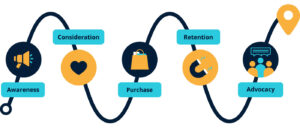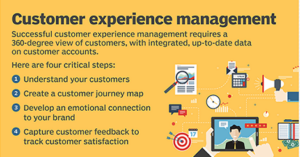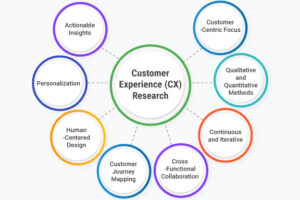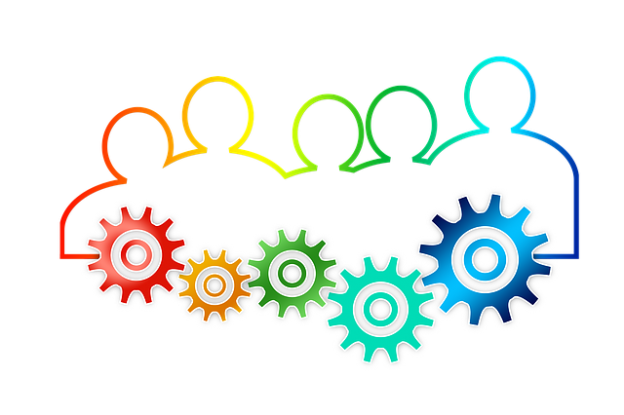In today’s hyper-connected world, consumers have come to expect seamless interactions across multiple touchpoints, and businesses are recognizing that delivering a cohesive customer experience is paramount to fostering loyalty and trust. Understanding connected customer experience is not just a trend; it’s a fundamental shift in how companies engage with their clients. This comprehensive approach encompasses every facet of the customer journey, from initial awareness to post-purchase support, and relies on the integration of technology, data, and human touchpoints. In this blog post, we will delve into the nuances of connected customer experience, exploring its vital components and how nurturing these relationships can lead to lasting brand loyalty.
Defining connected customer experience

CCX is about creating a holistic view of the customer that transcends individual interactions, integrating insights derived from data, technology, and human engagement to foster deeper connections. A truly connected customer experience means that every interaction a customer has with your brand—whether through social media, your website, in-store visits, or customer service—feels interconnected and consistent. It’s about breaking down silos within your organization so that every team, from marketing and sales to support and fulfillment, is aligned and informed about customer preferences and behaviors. This connectedness allows businesses to anticipate needs, personalize communications, and provide timely support, ultimately enhancing customer satisfaction.
In a world where customers have countless options and expect immediate responses, understanding CCX is crucial. It involves leveraging data analytics to glean insights about customers’ preferences, behaviors, and feedback, allowing businesses to tailor their offerings and interactions effectively. When customers feel understood and valued, they are more likely to engage with your brand, leading to increased loyalty and advocacy. Thus, defining Connected Customer Experience is not just about integrating technology; it’s about cultivating genuine relationships that drive long-term success for both the brand and its customers.
Why connected customer experience matters

In a world saturated with choices, customers expect more than just products or services. They demand experiences that resonate with them on a personal level. A connected customer experience offers several benefits:
- Increased customer satisfaction: Providing a seamless and consistent experience, businesses can enhance customer satisfaction and loyalty.
- Improved customer retention: A positive CCX can lead to repeat business and advocacy for the brand.
- Higher conversion rates: A connected journey makes it easier for customers to move through the sales funnel.
- Enhanced brand reputation: A strong CCX contributes to a positive brand image and reputation.
- Competitive advantage: Businesses that excel in CCX can differentiate themselves from competitors.
The importance of seamless interactions

A seamless interaction means that customers can transition effortlessly from one touchpoint to another, without having to repeat themselves or start from scratch. Imagine a customer who browses your website, adds an item to their cart, and later decides to inquire about it via social media. If they have to explain their previous actions or experiences all over again, it creates frustration and diminishes their overall satisfaction. In contrast, if your support team is equipped with the knowledge of that customer’s previous interactions, they can provide tailored assistance that fosters trust and loyalty.
Moreover, seamless interactions contribute to a sense of professionalism and reliability. Customers are more likely to develop a strong relationship with brands that make them feel valued and understood. Ensuring that your communications, branding, and service are cohesive across all channels, you create a more inviting environment that encourages deeper engagement. Not only does this enhance customer satisfaction, but it also increases the likelihood of repeat business and positive word-of-mouth referrals.
Key characteristics of a connected customer experience

At its core, CCX is about creating a unified and consistent customer journey. It’s about ensuring that every interaction, whether online or offline, contributes to a positive and memorable brand experience.
- Personalization: Tailoring interactions to individual customer preferences and behaviors. This involves leveraging data analytics to understand customer needs and delivering relevant content, offers, and recommendations.
- Omnichannel consistency: Providing a seamless experience across all channels, from website to physical store, ensuring a consistent brand message and tone.
- Real-time engagement: Responding promptly to customer inquiries and feedback through live chat, social media, or other channels.
- Data-driven insights: Utilizing customer data to inform decision-making, optimize marketing campaigns, and improve product offerings.
- Feedback loops: Actively seeking and incorporating customer feedback to refine the customer journey and enhance satisfaction.
Building a strong foundation for CCX
Creating a connected customer experience requires a holistic approach:
- Customer journey mapping: Visualize the entire customer journey, identifying touchpoints and potential pain points. This helps identify areas for improvement and optimization.
- Data integration: Combine data from various sources to create a single customer view, enabling a deeper understanding of customer behavior.
- Technology investment: Utilize CRM systems, analytics tools, and customer engagement platforms to support CCX initiatives.
- Employee training: Equip employees with the knowledge and skills to deliver exceptional customer experiences.
- Continuous improvement: Regularly evaluate and refine your CCX strategy based on customer feedback and performance metrics.
- Personalization strategy: Develop a personalization strategy based on customer data and preferences.
The role of technology on CCX
Leveraging technology and data for personalization has become a cornerstone of delivering a connected customer experience. With the abundance of data at our fingertips, businesses can now gain deep insights into customer behaviors, preferences, and needs. This wealth of information enables brands to anticipate customer desires and tailor their offerings accordingly.
To create meaningful personalization, companies should utilize analytics tools that track customer interactions across multiple touchpoints—be it websites, social media, or in-store experiences. Analyzing this data, businesses can segment their audience more effectively, allowing for targeted messaging and product recommendations that resonate on a personal level. For instance, an e-commerce site can utilize browsing history to suggest items that align with a customer’s past purchases or interests, fostering a sense of understanding and attentiveness.
Moreover, advanced technologies like artificial intelligence (AI) and machine learning play a pivotal role in enhancing personalization efforts. These technologies can automate processes and refine strategies in real-time, ensuring that the customer experience is not only tailored but also relevant and timely. Chatbots, for example, can engage customers with personalized responses based on their previous interactions, thereby improving satisfaction and fostering a sense of connection.
Ultimately, the key to leveraging technology and data lies in striking the right balance between automation and the human touch. While customers appreciate personalized experiences, they also value authenticity and genuine connections.
Measuring the impact of CCX
Measuring the success of your connected customer experience strategy is essential to understanding how well you’re fostering relationships with your customers. To effectively track customer experience, you need to leverage a combination of metrics and tools that provide valuable insights into customer interactions and satisfaction.
One of the most commonly used metrics is the Net Promoter Score (NPS), which gauges customer loyalty by asking how likely they are to recommend your brand to others. This simple yet powerful metric can reveal not only the overall satisfaction of your customers but also highlight potential areas for improvement. Another crucial metric is Customer Satisfaction Score (CSAT), which measures how happy customers are with a specific interaction or service. By using these scores in conjunction, you can get a well-rounded view of your customer experience landscape.
Additionally, Customer Effort Score (CES) is a vital metric that assesses how easy or difficult it is for customers to interact with your brand. A lower effort score typically indicates a smoother customer journey, which can lead to higher loyalty and retention rates.
To track these metrics effectively, various tools can be utilized. Customer feedback platforms like SurveyMonkey and Qualtrics allow you to create tailored surveys to capture NPS, CSAT, and CES data. Furthermore, integrating Customer Relationship Management (CRM) systems such as Salesforce or HubSpot can help you analyze customer interactions and segment your audience for more personalized experiences.
Web analytics tools, such as Google Analytics, can provide insights into user behavior on your website, allowing you to understand how customers navigate through your online environment. This information can help you identify any friction points that may affect their overall experience.
Real-world examples of CCX
Several companies have successfully implemented CCX strategies:
- Amazon: Personalized recommendations, seamless checkout, and efficient returns create a connected customer experience.
- Starbucks: Rewards programs, mobile ordering, and in-store personalization foster customer loyalty.
- Netflix: Tailored content recommendations and binge-watching features enhance the viewing experience.
Challenges and considerations in CCX
While the concept of Connected Customer Experience (CCX) is compelling, its implementation presents several challenges. Understanding and addressing these issues is crucial for successful execution.
Data privacy and security
- Compliance: Adhering to data privacy regulations like GDPR and CCPA is paramount.
- Data Security: Protecting customer data from breaches is essential for building trust.
- Transparent Data Usage: Communicating how customer data is used can build confidence.
Organizational alignment
- Cross-functional collaboration: Breaking down silos between departments is crucial for a unified customer experience.
- Culture shift: Fostering a customer-centric culture requires buy-in from all levels of the organization.
- Employee training: Equipping employees with the skills and knowledge to deliver exceptional experiences is essential.
Technology and infrastructure
- Investment: Implementing CCX requires significant investment in technology and infrastructure.
- Data integration: Combining data from various sources can be complex and time-consuming.
- Scalability: Ensuring that technology solutions can handle increased data volumes and customer interactions.
Overcoming personalization fatigue
- Relevance: Ensure personalized recommendations are truly relevant and avoid overwhelming customers.
- Transparency: Be transparent about data usage and offer options for customers to control personalization.
- Human touch: Combine personalization with human interaction to create authentic connections.
Measuring CCX success
- Defining key metrics: Identify metrics that align with business objectives and customer expectations.
- Data analysis: Use analytics to track performance and identify areas for improvement.
- Customer feedback: Continuously gather customer feedback to refine the CCX strategy.
Conclusion
Understanding connected customer experience is not merely a trend; it is a fundamental shift in how businesses engage with their customers in today’s digital landscape. The interconnectedness of various touchpoints—from social media interactions to personalized email campaigns—creates a holistic view of the customer journey. In having seamless and cohesive experiences, brands can foster deeper relationships that go beyond transactional interactions. When customers feel understood and valued, they are more likely to remain loyal, advocate for your brand, and contribute to its long-term success.
Investing in connected customer experience not only enhances customer satisfaction but also drives business growth. As technology continues to evolve, so too should our strategies for engagement. Leveraging data to gain insights into customer preferences and behaviors, businesses can tailor their approaches to meet individual needs, creating a sense of connection and community. Ultimately, it’s about creating a narrative where customers feel like integral participants in your brand story, fostering relationships built on trust, empathy, and shared values. Embrace the power of connected customer experience, and watch as it transforms not just your customer relationships, but the very essence of your brand.

